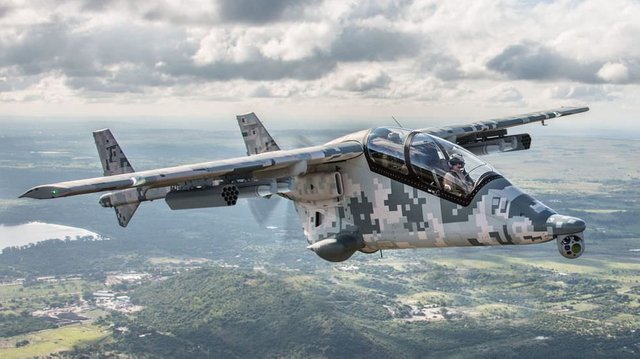An Aeronautical Engineering Marvel: Turning the Tide of the South African Border War
During the early years of the South African border war, the South African Airforce (SAAF) called upon engineers in the country for help. The reason? Several early-stage prototype aeroplanes, which drew on a revolutionary design (at that time, early 1970’s) for the shape of the wings and fuselage of the plane to minimise radar presence of planes, turned out as failures after their wings were torn from the fuselage during flight tests. The technology had been in development by the USA since 1958, and South Africa only recently discovered how to apply this to their own planes.

South Africa's first stealth plane. Source: https://www.popularmechanics.com/military/a21305/mwari-south-african-prop-plane/
Several months passed without a solution to the problem, and the situation started to appear very dire, with the Governing Body of the SAAF starting to make plans to abandon the project. Funding had already been cut nearly in half, and the engineer in charge of the project, Flip du Preez, was getting desperate for a breakthrough. It came soon after, in a form that would surprise everyone in the Aerospace industry. An aspiring young aeronautical engineer, who had just completed his third year of studies at the University of Stellenbosch, developed a controversial method of securing the wings to the fuselage, which in turn greatly boosted the performance and reliability of planes developed by the SAAF. This young engineer went by the name of Jan van der Merwe, and he would soon make history in the Aerospace Industry. Jan heard about the dilemma faced by the SAAF, and he started doing research in his free time to find a solution.
One day, only a few weeks after starting his research, he came upon the discovery that would change the world forever. According to his son, who is now head of the Aeronautical Society of South Africa, Jan was busy in his father’s garage one weekend, building test models from paper when he came upon the discovery. He immediately rushed to the SAAF’s Research branch in Stellenbosch, passing the knowledge to them and so changing the course of the war. What he discovered was this: He realised that, if you made a row of small holes in the wing, just where it used to tear, the forces created by air pressure during flight would be sufficiently redirected to other parts of the wing, preventing the wings from tearing from the fuselage as it usually did. Incredulous, this idea was put to the test, and sure enough, the test plane performed incredibly, passing all expectations with flying colours. Further simulations were ran, and only months later the first South African spy plane took to the skies above Namibia, performing so well that it was never even once detected by radar or lookouts during the rest of the entire war. Consequently, almost no records of its existence is available, and only a select few individuals, most of whom have long since passed away, know of its existence. After said plane was constructed, Flip du Preez was greatly interested in how the young man had come upon this discovery, and so he approached him with the question. Jan van der Merwe, who by that time was already a very successful engineer, was happy to sit down and recount the day he came upon this discovery.
What follows is a re-enactment of the conversation that took place that day, translated from Afrikaans:
Flip: “So tell me, Mr. van der Merwe…”
Jan: “Please, call me Jan.”
Flip: “So, Jan, how exactly did you come upon this maginificent discovery?”
Jan: “Well Flip, it was actually quite simple…”
Flip: “Please, enlighten me.”
Jan: “You know that paper with the row of holes in it? The perforated paper that helps you tear it? Well you know how that damn paper never tears along the holes where you want it to?”